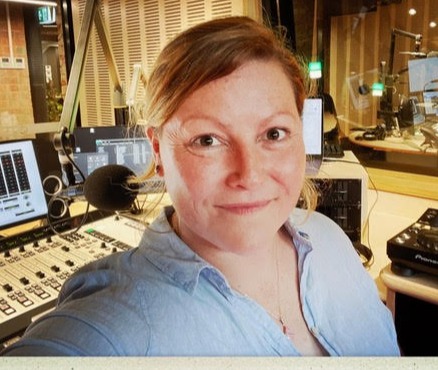The challenges faced by regional media and how PR can best build relationships with them

It might be no surprise that metropolitan-based media outlets are better resourced than regional and community-based outlets, but to what extent?
Medianet’s 2024 Media Landscape Report highlighted, among many other challenges for Australian media and journalists, that working in a city will get journalists a higher pay than working in regional or suburban publications.
On top of this “geographical” pay gap, the survey also found that fewer journalists are working outside of metropolitan areas, which in turn speaks to the lack of resources experienced in regional and community media.
So, to what extent are regional and community-based media outlets under-resourced?
The reality is that 35% of these newsrooms operate with less than 2 staff members and 16% even have no paid staff at all.
On top of under-resourcing, we’ve also seen a wave of closures over recent years with a net decrease of 113 newsrooms across Australia between 2019 and 2022. (Public Interest Journalism Initiative, Australian Newsroom Mapping Project, 2022)
While these surviving newsrooms might struggle on their own to get the resources they need to operate, organisations like LINA step in to support local and independent news media outlets to provide support where needed. LINA in particular is a not-for-profit industry association that provides aid through capacity-building support, networking and services, and strengthening public interest journalism through policy engagement.
Diving deeper into the geographical pay gap
Out of the 844 journalists surveyed in 2023, 65% worked in the city, 31% in regional areas, 13% in the suburbs and 11% in community media.
Of those journalists in the highest salary bracket ($140,000 per year or more), 67% reported to work in a city. It is clear that as the salary decreases, the proportion of journalists working in a city decreases too, highlighting a correlation between pay and where journalists work,
Journalists working in the suburbs were much more likely to fall into the pay bracket below $60,000 per year. With those working in community media receiving the lowest pay in general, and those working for public or government-funded media being the most highly represented in the pay bracket $60,000 to $99,999 per year.
Local and Independent News Association (LINA) Executive Director Claire Stuchbery says the media’s ability to serve diverse and regional voices has been particularly impacted by the global weakening of business models sustained by advertising and user-fees.
But these challenges have not stopped some local and hyperlocal publications from starting in certain areas.
 “Despite significant challenges to the industry in recent years, and this clear disadvantage in terms of pay and revenue, we’ve seen an increase in digital news publications starting up in regional and hyperlocal contexts. Many were formed by community members to fill news deserts and provide critical local updates during the COVID-19 pandemic and in the context of increasing natural disasters.”
“Despite significant challenges to the industry in recent years, and this clear disadvantage in terms of pay and revenue, we’ve seen an increase in digital news publications starting up in regional and hyperlocal contexts. Many were formed by community members to fill news deserts and provide critical local updates during the COVID-19 pandemic and in the context of increasing natural disasters.”
“We see these as the ‘green shoots’ of a news industry in transition, connecting people to one another and delivering public interest news that is responsive to the needs and priorities of their communities.”
The last edition of the annual report also reveals the biggest threats for Public Interest journalism.
Seventy percent of journalists identified ‘increase in disinformation/fake news’ as the biggest threat to public interest journalism in 2023, followed by ‘lack of resources and staff’.
Claire Stuchbery said these findings reflect global concern about the impact of misinformation and disinformation on democracy.
“It’s more important than ever to have independent media verifying and contextualising the information circulating online and in communities, and they are eager and well-qualified to do this,” she said.
“We need to support these journalists and publishers with the resources, funding, and training that they require.”
How should PR be engaging with and pitching to community media?
Many of the standard pitching practices can continue to be applied to regional and community media, however there are some specific that will make your pitches more effective. So, let’s go over the basics.
1. Make your pitches relevant to the journalist and the media outlet they work for.
The single most common theme for journalists (as found in every Media Landscape Report since 2019) is that journalists hate receiving pitches that aren’t relevant to them or their audience. Do your research and try to understand what the journalist is looking for before attempting to reach out. Here’s what journalists said in 2023 when asked about pitches:
“The stories need to be suitable to my area as an agricultural and rural journalist, many are nothing to do with it at all”
“PR groups should research mastheads' strict catchment areas before pitching stories kind-of near there. Often they're unrelated to our community.”
“I would appreciate it if PR people were more accurate in targeting me, I receive many emails that have nothing to do with my work and they waste my time.”
Claire also noted the importance of explaining why the journalist should be interested in your story "Tailor your distribution list to ensure the information you’re sending is relevant to the location and/or community of interest a news publisher is serving. Better still, highlight why you’re sending it to them specifically in your communication. Small newsrooms are particularly pressed for time, so focusing your communication on why your information is relevant to their audience will help engage journalists in sharing your story."
2. Regional and community media are under-resourced, so keep this in mind and provide as much support as you can.
PR professionals who provide more support to the journalists they work with will generally build better relationships. When making a pitch, give the journalist the news angle front and centre, include images, videos or even audio snippets (especially for radio stations or podcasts), and make sure you have a reliable media contact. Give the journalist everything they need to write the story without making them dig for it.
Adding to this, Claire shared that "PR professionals often focus more time on mainstream media outlets and forget to service local and independent newsrooms with media releases and interview opportunities. However journalists can quickly understand why the story is relevant to their community, they’re much more likely to run features, series and multimedia pieces than bigger newsrooms, they just need the hook to be relevant."
3. Place your trust in the journalists you reach out to.
Journalists are professionals in their field and they know what they are doing. After sending your pitch, you can rest assured that if the story is both relevant and news-worthy, then the journalist is likely to pick it up. But this is always subject to review by the Editor and other stories in the current news cycle.
If a journalist does pick up your story, you can trust them to be truthful and impartial. In our 2023 Media Landscape Survey, journalists also had a lot to say on this topic:
“we are there to tell what is happening, not 'spin'”
“our role [is] to be impartial”
“We always strive to cover a diverse range of topics and represent our whole community. But generally we cop criticism that we are to left or right of centre despite our best efforts to be balanced.”
Building better relationships with journalists in regional and community media involves making pitches relevant to their audience, providing support due to their under-resourced nature, and trusting in their professionalism and impartiality. By understanding these key tips, PR professionals can enhance their communication with journalists and contribute to the vital work of public interest journalism. To learn more about effective PR strategies for working with these journalists, read the full 2024 Australian Media Landscape Report.
About the Author

Mercedes Carrin
Mercedes is passionate about purpose-led marketing initiatives that help businesses and their audience build relationships. Over more than 15 years she has executed effective marketing campaigns within the media, advertising and public relations industries leveraging the power of storytelling, technology and data. Based in Sydney, Mercedes was formerly Marketing Manager at Australian Associated Press (AAP) which has given her a unique perspective of the Australian and New Zealand media landscape.




